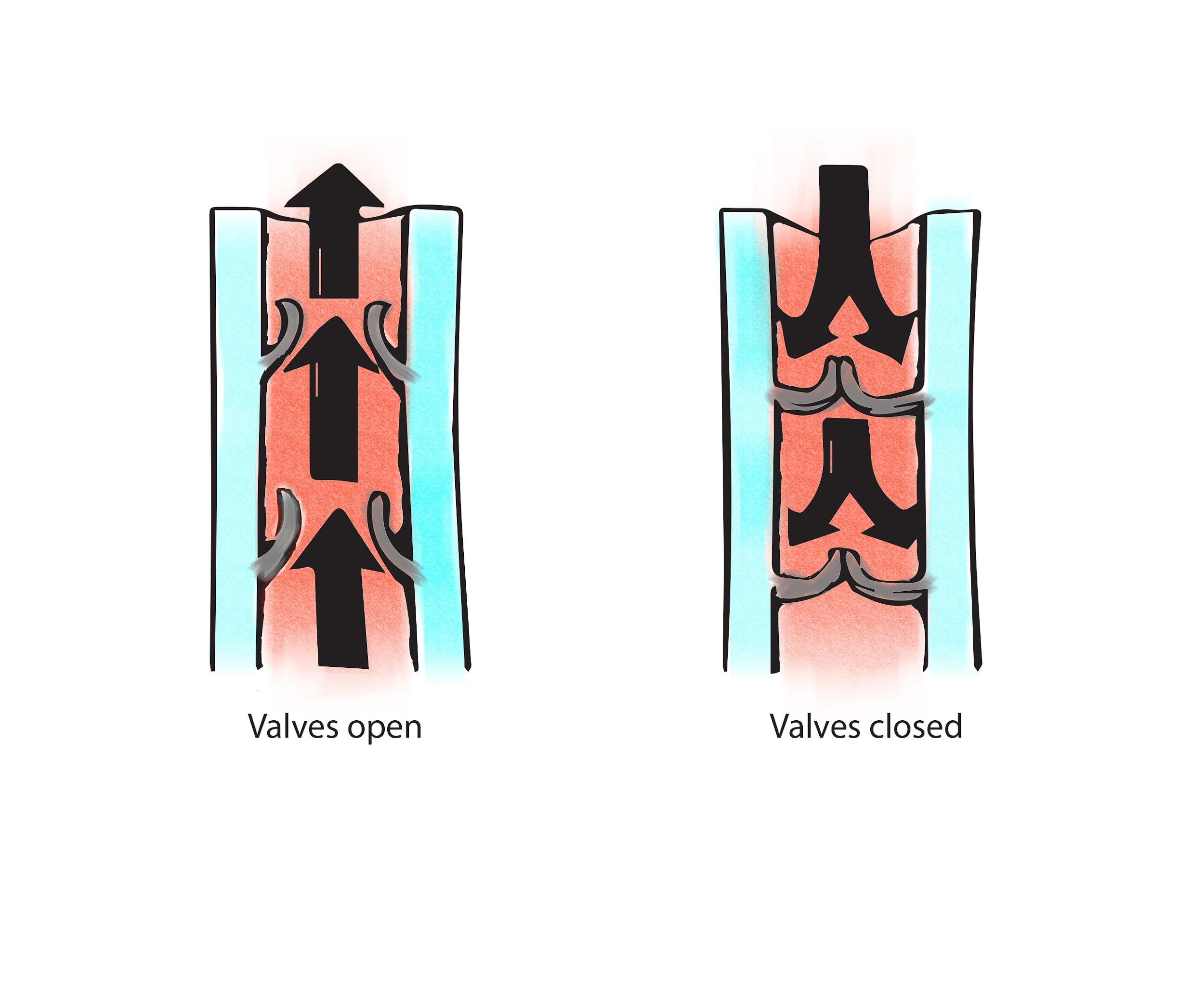
Blood vessels that contain valves are:
(a) Arteries
(b) Veins
(c) Capillaries
(d) All of the above
Answer
574.2k+ views
Hint: Valves present in blood vessels prevent the backward flow of the blood. Since it prevents the backward flow it is present in the blood vessel which carries the blood to the heart. The walls of these blood vessels are thinner and they mostly carry deoxygenated blood.
Complete answer:
Blood vessels form a tubular network throughout the body that allows the blood to flow for the heart to all living cells of the body and then back to the heart. There are two main types of blood vessels, Arteries, and Veins. Blood from the heart passes through the vessels of progressively smaller diameters, known as Arteries, Arterioles, and capillaries. Blood to the heart from the tissues passes from capillaries, venules, and veins.
Veins collect blood from different parts of the body and take it towards the heart. The walls of the blood vessels are Tunica Externa (outermost layer), Tunica media (middle layer) , and Tunica Interna (innermost layer).
Tunica media in the vein is thin, having fewer muscle fibers. Tunica internal has a simple, elastic membrane and elongated endothelial cells. The walls of veins are thin and non-muscular. The veins are collapsible because they have thin walls. Veins have valves that prevent the backward flow of the blood. These valves are bicuspid, meaning they have two flaps like structures. These flaps are made up of elastic tissues. When the valve is open blood flows freely upward towards the heart and when the valves are closed blood cannot flow back towards the legs. The flow of blood is not so fast because the blood in veins is in low pressure.

Hence, the correct answer is ‘(b) Veins.’
Note:
- Except for pulmonary veins, all veins carry deoxygenated blood.
- Damaged veins contribute to a common condition known as vein diseases or venous insufficiency.
- When valves in veins fail to work properly, they do not close and blood flows backward in the opposite direction towards the heart due to gravity.
- Since the blood flow works against the gravity, the blood being transported back to the heart may pull in legs while walking or standing when the walls of the veins become weakened.
Complete answer:
Blood vessels form a tubular network throughout the body that allows the blood to flow for the heart to all living cells of the body and then back to the heart. There are two main types of blood vessels, Arteries, and Veins. Blood from the heart passes through the vessels of progressively smaller diameters, known as Arteries, Arterioles, and capillaries. Blood to the heart from the tissues passes from capillaries, venules, and veins.
Veins collect blood from different parts of the body and take it towards the heart. The walls of the blood vessels are Tunica Externa (outermost layer), Tunica media (middle layer) , and Tunica Interna (innermost layer).
Tunica media in the vein is thin, having fewer muscle fibers. Tunica internal has a simple, elastic membrane and elongated endothelial cells. The walls of veins are thin and non-muscular. The veins are collapsible because they have thin walls. Veins have valves that prevent the backward flow of the blood. These valves are bicuspid, meaning they have two flaps like structures. These flaps are made up of elastic tissues. When the valve is open blood flows freely upward towards the heart and when the valves are closed blood cannot flow back towards the legs. The flow of blood is not so fast because the blood in veins is in low pressure.

Hence, the correct answer is ‘(b) Veins.’
Note:
- Except for pulmonary veins, all veins carry deoxygenated blood.
- Damaged veins contribute to a common condition known as vein diseases or venous insufficiency.
- When valves in veins fail to work properly, they do not close and blood flows backward in the opposite direction towards the heart due to gravity.
- Since the blood flow works against the gravity, the blood being transported back to the heart may pull in legs while walking or standing when the walls of the veins become weakened.
Recently Updated Pages
Master Class 12 Business Studies: Engaging Questions & Answers for Success

Master Class 12 Economics: Engaging Questions & Answers for Success

Master Class 12 English: Engaging Questions & Answers for Success

Master Class 12 Maths: Engaging Questions & Answers for Success

Master Class 12 Social Science: Engaging Questions & Answers for Success

Master Class 12 Chemistry: Engaging Questions & Answers for Success

Trending doubts
What is meant by exothermic and endothermic reactions class 11 chemistry CBSE

Which animal has three hearts class 11 biology CBSE

10 examples of friction in our daily life

One Metric ton is equal to kg A 10000 B 1000 C 100 class 11 physics CBSE

1 Quintal is equal to a 110 kg b 10 kg c 100kg d 1000 class 11 physics CBSE

Difference Between Prokaryotic Cells and Eukaryotic Cells




